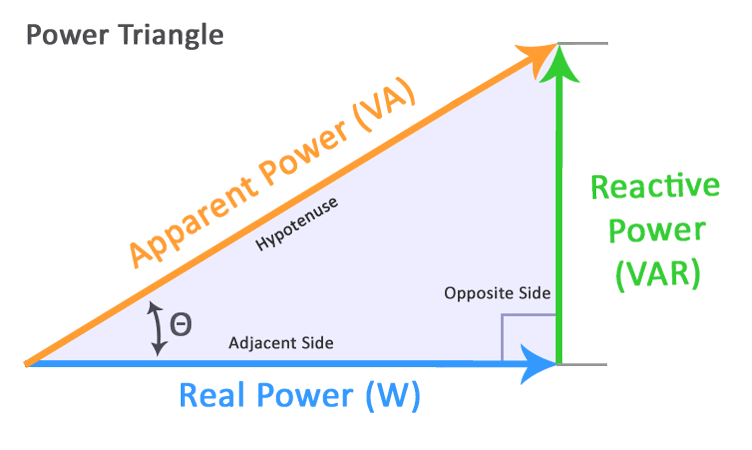Power Triangle Calculator
Power Triangle

Terms
- Real Power (P) - Measured in watts, defines the power consumed by the resistive part of a circuit. Also known as true or active power, performs the “real work” within an electrical circuit.
- Reactive Power (Q) - Measured in VAR, the power consumed in an AC circuit that does not perform any useful work, caused by inductors and capacitors. Reactive power counteracts the effects of real power, taking power away from a circuit for use in magnetic fields.
- Apparent Power (S) - The product of RMS voltage and rms current flowing into a circuit, contains real power and reactive power.
- Power Factor (θ) - The ratio of real power (P) to apparent power (S), generally expressed as either a decimal or percentage value. Power factor defines the phase angle between the current and voltage waveforms. The larger the phase angle, the greater the reactive power.
Block ads by default when you upgrade.
Formulas
- Real Power (P) = VIcos θ, Watts (W)
- Reactive Power (Q) = VIsin θ, Volt-amperes Reactive (VAr)
- Apparent Power (S) = VI, Volt-amperes (VA)
- Power Factor (θ) = P/S
- VA = W / cos θ
- VA = VAR / sin θ
- VAR = VA * sin θ
- VAR = W * tan θ
- W = VA * cos θ
- W = VAR / tan θ
- Sin(θ) = Opposite / Hypotenuse = Q/S = VAr/VA
- Cos(θ) = Adjacent / Hypotenuse = P/S = W/VA = power factor, p.f.
- Tan(θ) = Opposite / Adjacent = Q/P = VAr/W
🔍 Looking for a platform to connect with experienced professionals and expand your understanding of electrical testing and maintenance? TestGuy is here for you! Join our knowledge sharing hub, engage in insightful conversations, and access valuable resources that will empower you to excel in your field. Join the conversation!